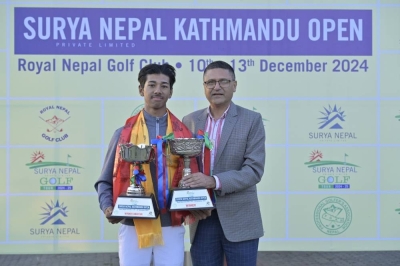Putting on a new face : A Maoist metamorphosis
Kathmandu, January 21:
If one believes Maoist chairman Prachanda’s statement, his party will be moving towards political and ideological transformation. CPN-Maoist’s recently concluded central committee meeting revamped its wartime organisations and converted them into people-centric and election-oriented organisations. It took the party eight years to transform itself from a rebel force to a mainstream political outfit abiding by the principles of democracy. Internal and external factors compelled the Maoists to return to mainstream politics through a series of ideological transformation.
The meeting passed a political report, future political course, restructured the party organisation and set a three-month long programme focusing on the upcoming CA polls. It shows they have shed the old-fashioned ideology of proletariat dictatorship.
On January 18, Prachanda spoke to media persons on how they transformed into a mainstream political force. “Decisions of some of the meetings hold significance from a historical point of view,” Prachanda said on Friday. The meeting was also important as it managed to maintain unprecedented “unity” between the “hardliners” and the “soft liners” within the party, he said.
The party had a long-held view that an arms struggle was the only means of socio-economic transformation.
CPN-Maoist came into existence following the split of the then CPN-Unity Centre in 1993. The party’s third expanded meeting decided on February 12, 1996 to wage a People’s War which was officially brought to an end following the signing of the Comprehensive Peace Accord on November 21, 2006.
The fourth expanded meeting further decided to build base areas to consolidate the party’s hold in the rural areas. This, according to Prachanda, helped the party emerge as an indomitable force that paralysed the State in a large part of the country. These two decisions helped the party widen its space in the Nepali political sphere.
But by 2000-end, the party reviewed its policy of people’s war. The second national convention held amidst the People’s War in 2000 was a turning point in the party’s ideological front, says Prachanda.
“The second convention decided for the first time to make a fusion of People’s War with Jana Andolan,” he said.
It was the convention that called for the CA polls, a round table conference and an interim government. These decisions were also a deciding factor in reaching the 12-point understanding with the agitating parliamentary parties later in 2005.
Based on the second convention, a central committee meeting held in Rolpa’s Dumla adopted the policy of development of democracy in the 21st century. This meeting principally accepted competitive multiparty democracy. Another central committee meeting held in Rukum’s Chunbang decided to make an ally with the parliamentary parties against the royal regime. It was a paradigm shift in the Maoist ideology.
Prachanda said the meeting held in Kavre and Kathmandu was a continuation to the Chunbang meeting.
“The Kavre meeting has helped sort out our policy-level differences through the process of unity, struggle and transformation,” he said, adding: “Now, we are in the transformation stage and it will be completed following the assembly election. We have maintained our unity through the transformation process.” Such statement by the party chief himself suggests the intensity of inner-party differences over the party’s volte face on its old ideology.
Prachanda said the Kavre meeting focused its attention on holding the CA election and analysed how it can be linked with socialism in the future.
He also said the meeting went through self-criticism regarding the party’s working style and its plan of action after the party entered the peace process.
“We should have given guidelines to our cadres on what they should or shouldn’t do. We should have educated our cadres to shed their wartime tactics and improve relations with people once we entered the peace process,” he said.
The Kavre meeting has decided to return the property seized during the conflict to the rightful owners and help displaced families return home. Prachanda promised to accomplish these two jobs by the end of the second week of February.
The party had also promised to return seized property to rightful owners even in the past, but they did not do so. Now, it appears the party would comply with agreements reached with the seven-party alliance keeping in mind the upcoming April 10 election. Until the 23-point agreement, the Maoists had made this a bargaining chip to get their other demands addressed by the government.
Going through the Maoists’ decisions from the third plenum to the Kavre meeting, it is unlikely that they would resort to arms even if the party suffers a setback in the CA polls.
Prachanda, who is considered to be a soft liner in the party, appears to have convinced the hardliners led by Mohan Baidya and Ram Bahadur Thapa that the party must cast its revolutionary zeal and enter mainstream politics through elections.
Belated though, it is a good sign that a party with armed forces has decided to cast its old skin.





